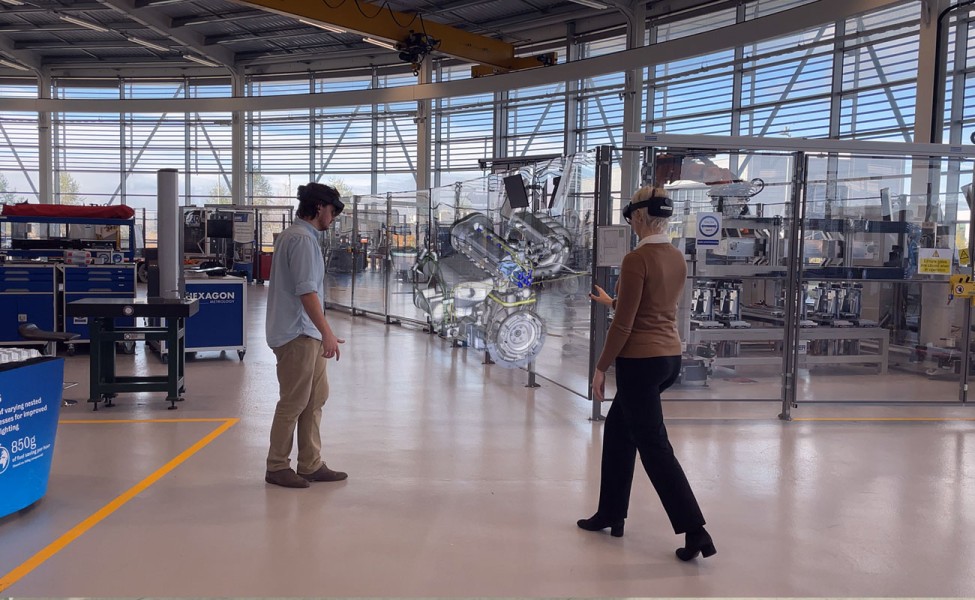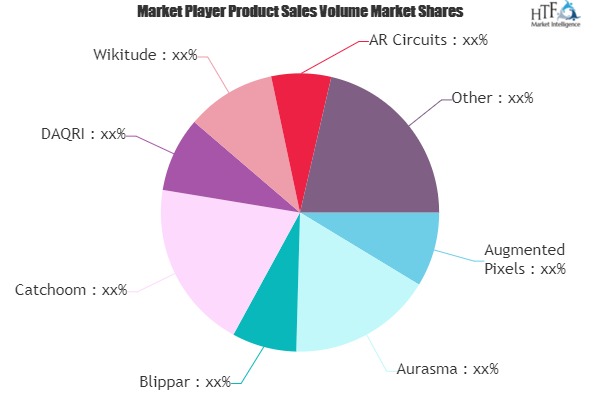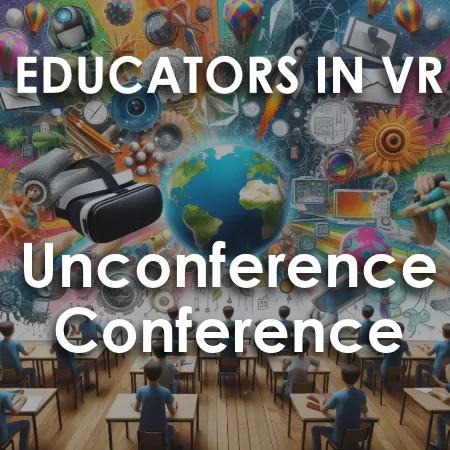As more and more of the design and manufacturing process becomes digitalized, there is a fundamental disconnect between the wealth of digital data available to product and manufacturing engineers, and the physical world in which we are attempting to apply it.
This two-part newsletter series will discuss the impact of the resulting ‘cognitive gap’ and the associated challenge of geographically distributed teams. As well as examining the potential offered by Extended Reality (XR) and how these technologies could help to close this gap.
A World that demands MORE!
We live in a world that is experiencing change at an unprecedented pace. Technology is evolving faster, and the world is demanding greater choice, increased personalization, and superior performance. Manufacturers are responding by producing more products, bringing them to market faster, and pursuing every opportunity to gain a competitive advantage.
The pace of technology development and adoption may be stretching the capabilities of many, but it is also a catalyst for business transformation.
At the core of modern product development and manufacturing, a digital backbone connects product engineers to the manufacturing domain, and to the upstream and downstream extended enterprise. This digital backbone enables collaboration and distribution outside the traditional enterprise, into a global value system. It provides the foundation for digital manufacturing, and for the adoption of advanced manufacturing technologies both today and tomorrow.
Digital Ecosystem

With the evolution of computing as an essential part of design and manufacturing engineering, sequential engineering methods of product design and development have been replaced by concurrent engineering approaches. By embracing concurrent engineering, manufacturers can avoid costly errors, improve cost and quality, and accelerate time-to-market.
However, as Porter and Heppelmann noted in the December 2017 issue of the Harvard Business Review, “there is a fundamental disconnect between the wealth of digital data available to us and the physical world in which we apply it”. The authors continue to note that, “the rich data we now have to inform our decisions and actions remain trapped on 2D pages and screens”.
Closing the gap between the digital and physical world presents an opportunity to exploit the power of digital product development and digital manufacturing as a competitive advantage.
Closing the Cognitive Gap
Humans access and process information through each of our five senses; sight, hearing, smell, taste and touch. However, the ability to process this information varies between the senses, and the majority (an estimated 80% to 90%) of information is accessed through sight.
Our ability to consume and process information is limited by the demand for our mental capacity, in what is referred to as ‘cognitive load’. Cognitive load is impacted by the mental effort required to process any given type of information. For instance, in reading this newsletter, mental effort is required to translate letters into words, and the words must be further interpreted into meaning.
Importantly, when talking about the disconnect between digital and physical worlds, cognitive load also depends significantly on ‘cognitive distance’, that is, the gap between the form in which information is presented, and the context in which it is applied. For instance, when following navigation instructions from a dash-mounted in-vehicle satellite navigation system, the driver must consume the information presented on the screen, retain that information in working memory, translate the instructions onto the physical world in front of them, and then finally act on the instructions, all while still maintaining control of the vehicle. The resulting cognitive journey creates a significant cognitive load.
Psychologists take this concept even further, with research showing that humans can only attend to one ‘cognitive task’ at a time. The research shows that task switching (aka multitasking) is “expensive”, taking more time to complete, and results in more errors. If the tasks are complex, then the time and error penalties, or ‘cognitive cost’, will increase. In fact, the same research concluded that task switching could add up to a loss of 40% of your productivity.
Consider therefore the scenario of today’s engineer, constrained to viewing scaled down versions of 3D models, through a 2D screen, while attempting to consider the impact of changes in the context of full-sized products in the real world.

Given the increasing pressures on manufacturers to do more, to do it faster and to do it better, the advantages of closing the cognitive distance, and the potential to improve productivity, is a compelling reason to take up the challenge in an engineering context.
How has technology been responding to close ‚Cognitive Distance‘?
Virtual Reality (VR) is an interactive computer-generated experience taking place within an entirely simulated environment. It primarily incorporates auditory and visual feedback but can also include other types of sensory feedback like haptics. Within VR a three-dimensional image or environment can be interacted with in a realistic way, VR can make it possible to ‘experience’ anything, anywhere, anytime. It is the most immersive type of reality technology.

In an industrial context, Commercial VR has been evolving for around 30 years. The immersive experience can be created through complex CAVE environments where projectors are directed onto three to six of the walls of a room-sized cube. This produces full-size renderings, giving the user a feeling of being immersed in a 3D world that can be interacted with through 3D glasses and a hand controller or glove. However, CAVEs are extremely expensive; costing anything around $1M+.
PowerWalls have attempted to reduce the required investment to around $100k (possibly more if a 4K resolution is sought). Like a CAVE, a PowerWall creates a display through projection or more recently through a matrix display using 3D glasses to create the illusion of three dimensions. However, despite the resolution, the result is still users working on a 2D screen, albeit at full-scale.
It is also worth noting that just presenting the data in 3D does not make an immersive system. It is only through motion capture tracking technologies that the system becomes actually immersive. The markers are seen by the system and the image on the screen is then rendered to that person’s point of view. This means that the tracked user is properly immersed. However, it can only track one person. So, your commercial CAVE or Powerwall is really only truly immersive for one person at a time; when you consider this fact, these seem even more expensive!
Interestingly, Virtual Reality has seen a parallel development path in the consumer world; Consumer VR has been evolving for around 20 years. The technology companies behind Consumer VR are global tech giants, such as Google and Meta, and the objective has been wide-scale availability at low cost. However, unlike Commercial VR, and despite multiple hardware giants playing in this field, the software behind Consumer VR has come from the gaming industry, primarily Unity and Unreal. Consumer VR is a totally immersive technology, with the user seeing a fully digital environment using head-mounted displays. The upside is that the users can be ‘transported’ to a full-sized simulation, and then interact with that environment. The simulation also allows multiple users to interact within the simulated world.
The advantages of consumer VR have led to many engineering and manufacturing companies adapting the technology for use in a commercial setting. There are a wide range of use cases, from immersive design reviews and meetings to full scale factory layout planning. The capabilities for collaboration and visualization at a more affordable price point make this kind of VR particularly valuable.

Alongside VR technology, Augmented Reality and Mixed Reality are also being utilized in engineering and manufacturing. Augmented Reality (AR) provides the ability to overlay and view digital data onto images of the real world, using handheld devices such as smartphones and tablets. AR is seeing a rapid uptake in applications such as training, where digital assembly or service instructions can be presented by anchoring digital images onto real world ‘locators’. The disadvantage can be a cognitive distance being created by having to place the screen to one side while working, or the hindrance of holding a screen while trying to work with the images displayed. Mixed Reality, which overlays digital information with the real world using headsets such as Microsoft HoloLens, can allow for a handsfree option.
This digital and physical blend goes a long way towards closing the cognitive gap, providing spatial context for the user by placing full-sized 3D digital data into the user’s world, and removing the need to view through a screen. With the distinct advantage of being able to see other physical users in the same space, and even to present virtual ‘avatars’ of remote users into the room. As with consumer VR and AR, MR is enabled by the same graphical gaming engines.
In Summary
While the advantage of bringing engineers closer to their designs may be obvious, the scale of investment required for commercial VR- and the complications of applying it- will present a barrier for many product development businesses. Consumer VR as well as Augmented and Mixed Reality technologies present an opportunity to overcome the financial barriers to entry.
These technologies, collectively known as ‘XR’, also represent the potential to provide engineers with better solutions to interact with full-sized digital representations of their designs in a spatially relevant context, helping to reduce the issues that come with the disconnect between the digital information and how to apply it in the real world.
In the second part of this newsletter series, we will go into more detail about the positive impact XR technology can have on collaboration in an industry that has increasingly more widespread teams. As well as discussing the most common use cases for XR we have seen and how these are helping businesses close the cognitive gap.
Quelle:




